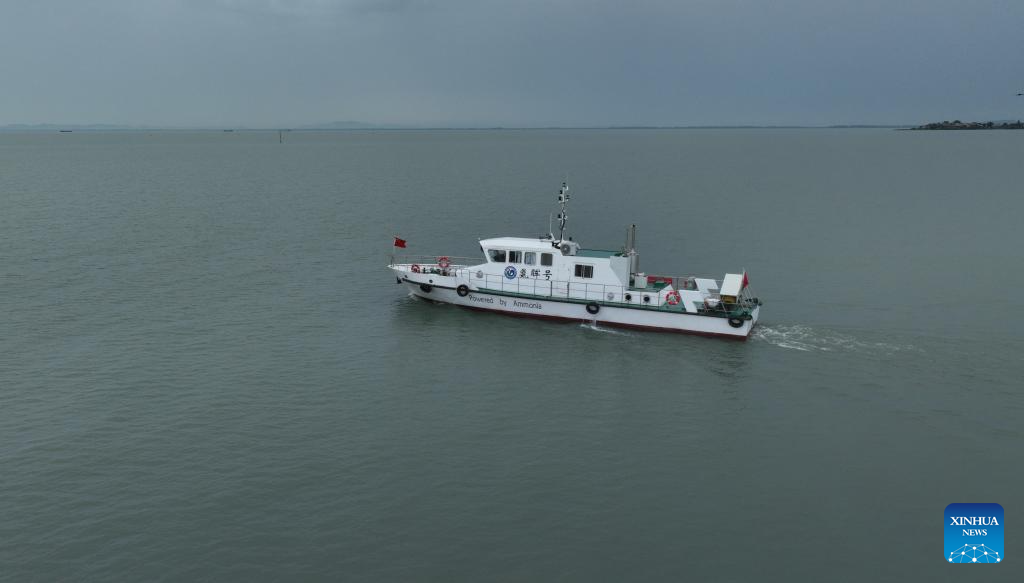- The “Anhui” completed its maiden voyage in Hefei, east China, powered entirely by ammonia.
- The 50-ton vessel operates without producing CO₂, offering a blueprint for decarbonizing global shipping.
- Developed by the Institute of Energy of the Hefei Comprehensive National Science Center and Shenzhen Haixu New Energy Co., Ltd.
- Equipped with ammonia combustion technologies and hydrogen-ammonia hybrid systems.
- Experts see this as a breakthrough in China’s clean marine energy efforts aligned with dual carbon goals.
HEFEI, CHINA — In a landmark achievement for green maritime innovation, China successfully launched the world’s first fully ammonia-powered demonstration ship, the “Anhui,” on its maiden voyage through the waterways of Hefei, according to Xinhua.
The vessel, developed by the Institute of Energy at the Hefei Comprehensive National Science Center and its subsidiary Shenzhen Haixu New Energy Co., Ltd., is powered solely by ammonia—an energy-dense, carbon-free fuel that emits only nitrogen and water upon complete combustion. The milestone represents a significant leap toward decarbonizing the global shipping industry.
Technical Specs and Clean Fuel Innovation
The Anhui boasts a 200kW high-speed gas internal combustion generator, twin 100kW propulsion motors, and a twin-screw propulsion system. It carries a full load of up to 50 tonnes and cruises at a rated speed of 10 knots.
According to Wu Dianwu, a lead researcher from the institute, the vessel’s development required overcoming numerous technological challenges, including stable ammonia ignition and combustion, catalytic cracking of ammonia to hydrogen, and seamless control of hydrogen-ammonia mixed fuel systems in internal combustion engines.
Global Context and Future Impact
Ammonia, long used as a chemical feedstock, is increasingly seen as a viable alternative fuel for the shipping industry. Countries like Japan and Norway have already begun testing ammonia-powered maritime technologies. The International Energy Agency predicted in a 2021 report that ammonia could supply up to 45% of shipping energy demand by 2050 in a net-zero emissions scenario.
However, widespread adoption still faces hurdles such as ignition difficulties, combustion instability, and infrastructure readiness. China’s breakthrough in achieving stable, large-scale ammonia combustion may provide a roadmap for broader applications — from cargo vessels to industrial boilers and fuel cell systems.
China’s Green Shipping Vision
The successful launch of the Anhui aligns with China’s “dual carbon” strategy, which aims to peak carbon emissions before 2030 and achieve carbon neutrality by 2060. Experts believe that commercializing ammonia fuel systems could accelerate the transformation of China’s shipping fleet into a low-carbon and sustainable model.
A global media for the latest news, entertainment, music fashion, and more.















